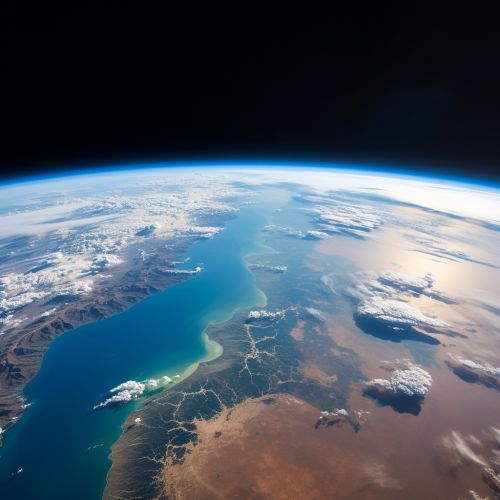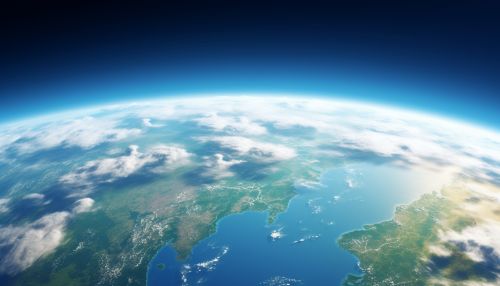Earth
Introduction
Earth is the third planet from the Sun and the only astronomical object known to harbor and support life. About 29.2% of Earth's surface is land consisting of continents and islands. The remaining 70.8% is covered with water, mostly by oceans, seas, gulfs, and other salt-water bodies, but also by lakes, rivers, and other freshwater, which together constitute the hydrosphere. Much of Earth's polar regions are covered in ice. Earth's outer layer is divided into several rigid tectonic plates that migrate across the surface over many millions of years, while its interior remains active with a solid iron inner core, a liquid outer core that generates Earth's magnetic field, and a convective mantle that drives plate tectonics.


Physical Characteristics
Shape
Earth's shape is approximately oblate spheroidal, flattened at the poles and bulging at the equator. The diameter from pole to pole is shorter than the diameter across the equator. This oblateness is often characterized by the flattening factor, which is the difference between the equatorial and polar diameters.
Composition
Earth's mass is approximately 5.97 x 10^24 kilograms. It is composed mostly of iron, oxygen, silicon, and magnesium. The mantle extends to a depth of about 2,900 kilometers, and is predominantly composed of silicate rocks rich in magnesium and iron. The core, which is about 3,400 kilometers in radius, is mostly composed of iron, with smaller amounts of nickel and other lighter elements.
Atmosphere
Earth's atmosphere is a layer of gases retained by Earth's gravity. It consists of 78% nitrogen, 21% oxygen, and traces of other gases including argon and carbon dioxide. The atmosphere protects life on Earth by absorbing ultraviolet solar radiation and reducing temperature extremes between day and night.
Earth's Systems
The Geosphere
The geosphere is the solid part of Earth, including the crust, mantle, and core. The crust is divided into tectonic plates, and its movement creates earthquakes, volcanic activity, mountain building, and oceanic trench formation.
The Hydrosphere
The hydrosphere includes all water on Earth, from the surface to deep within the Earth's crust. It encompasses oceans, seas, lakes, rivers, groundwater, and the water vapor in the atmosphere.
The Biosphere
The biosphere is the global sum of all ecosystems and living organisms. It can be divided into several biomes, including forests, grasslands, deserts, and tundra.
The Atmosphere
The atmosphere is the layer of gases surrounding Earth. It is divided into several layers, including the troposphere, stratosphere, mesosphere, thermosphere, and exosphere.
Human Interaction
Humans interact with Earth's systems in numerous ways. For example, humans depend on the biosphere for resources such as food, wood, and medicine. However, human activities such as deforestation, pollution, and climate change are causing significant damage to Earth's systems.
